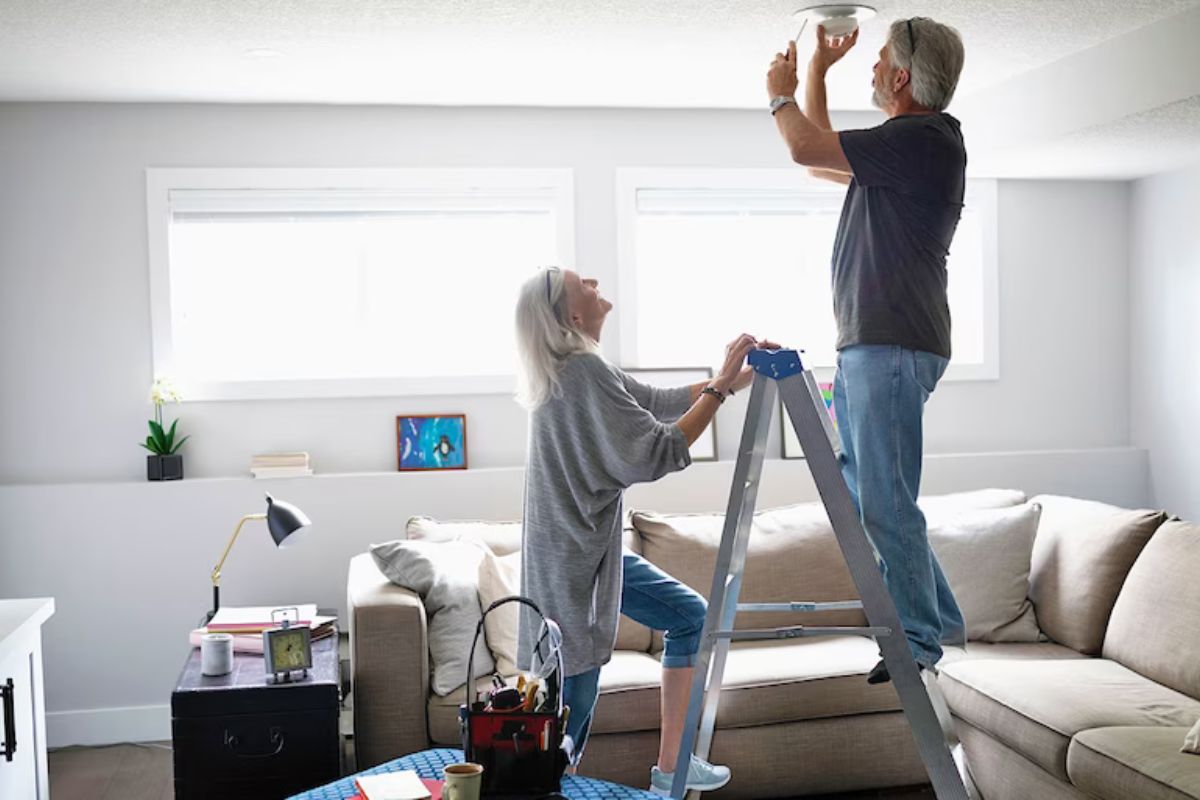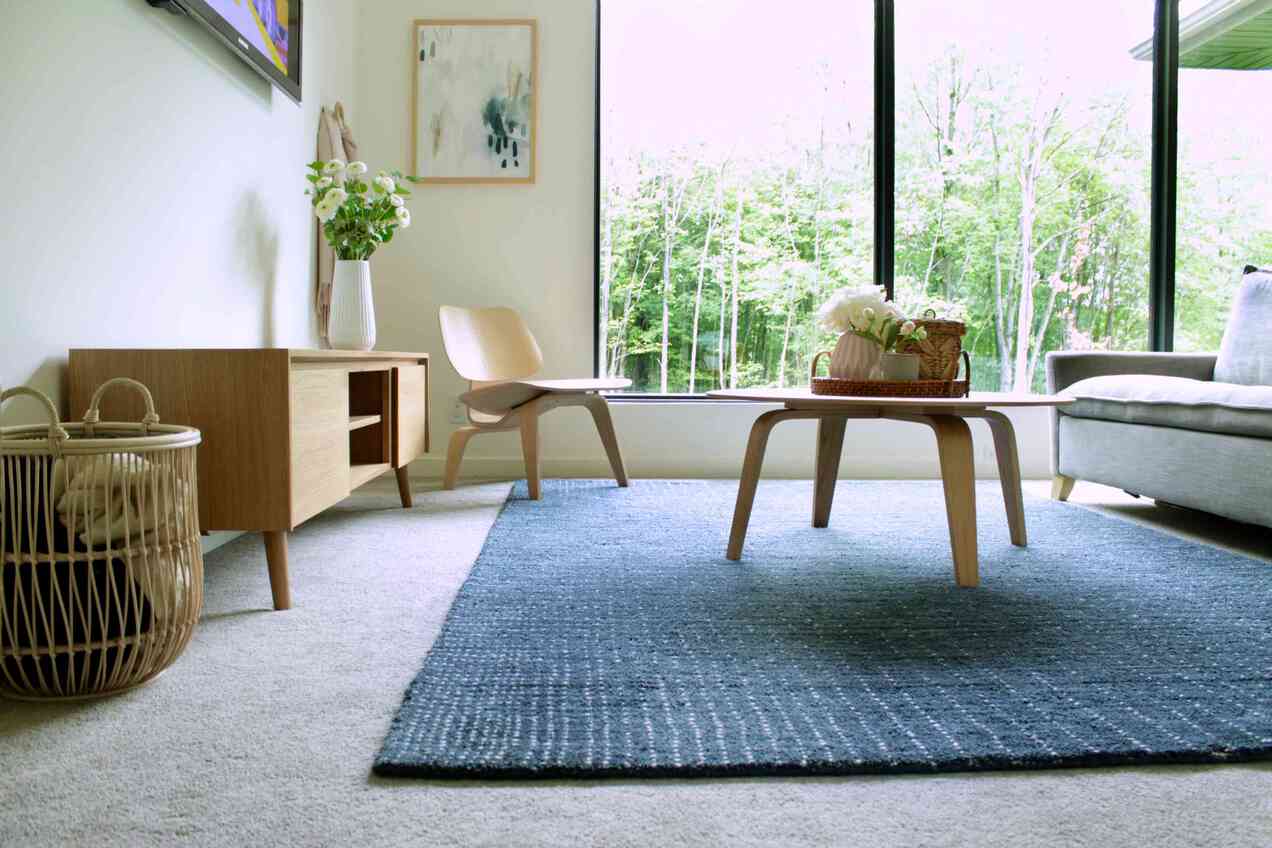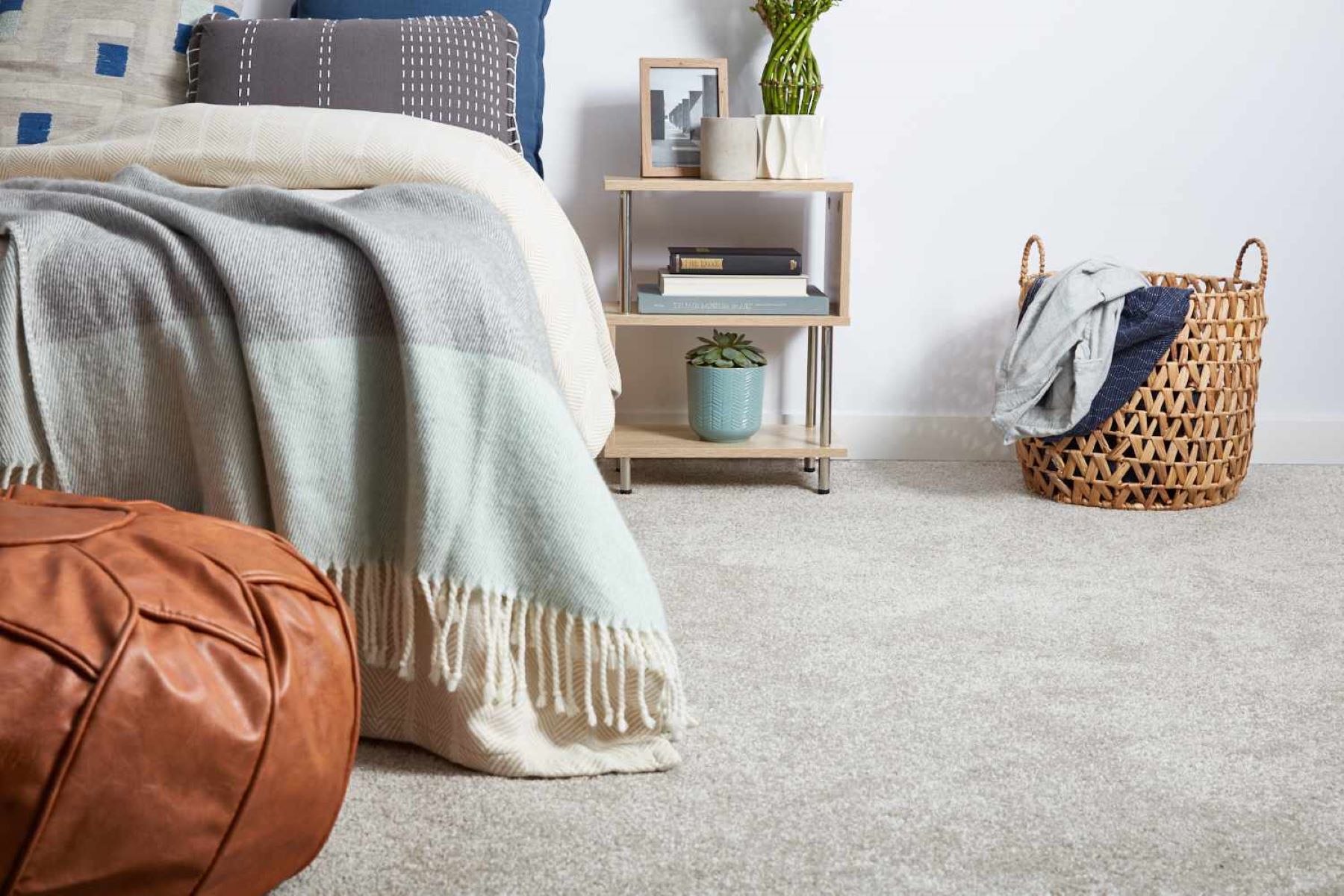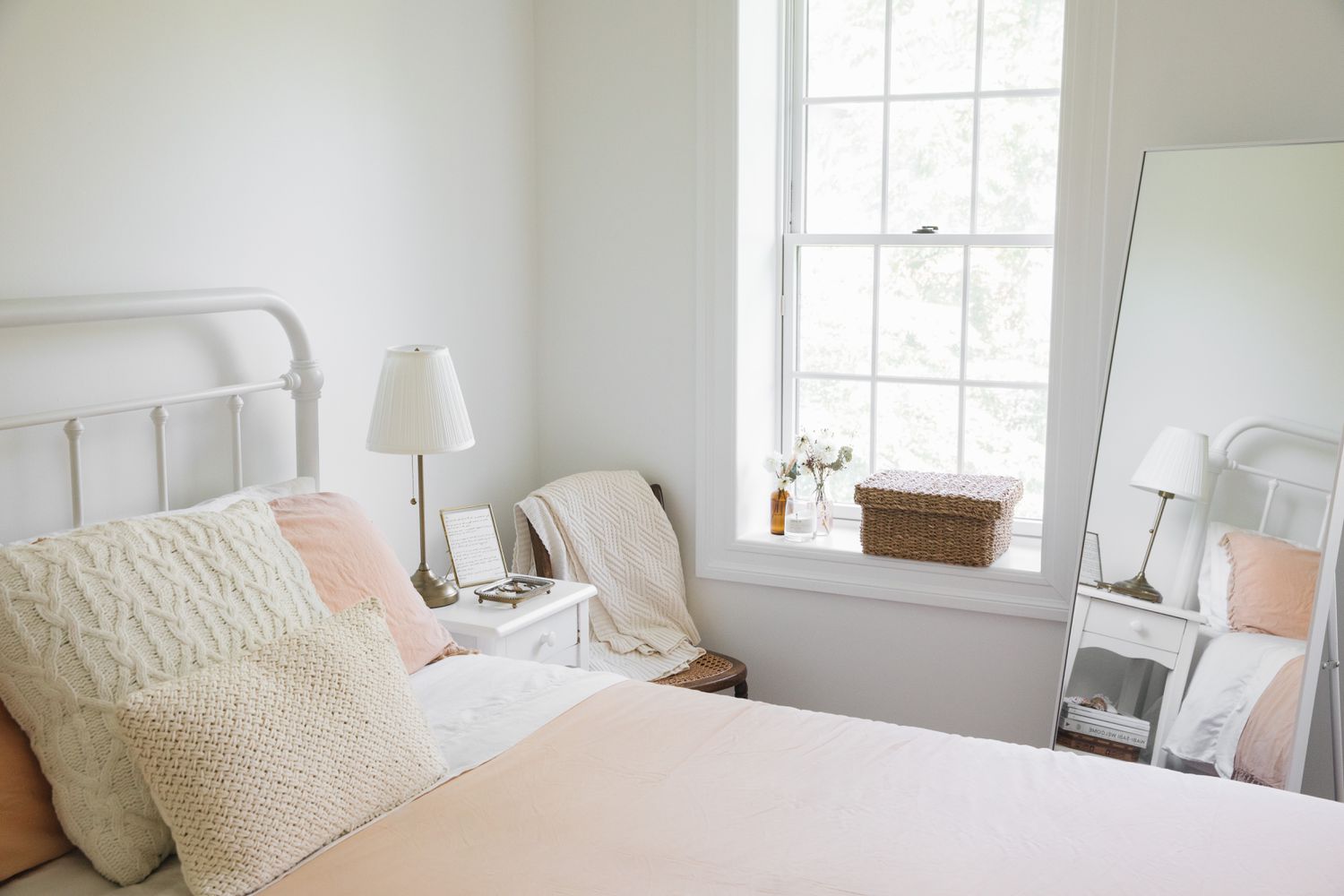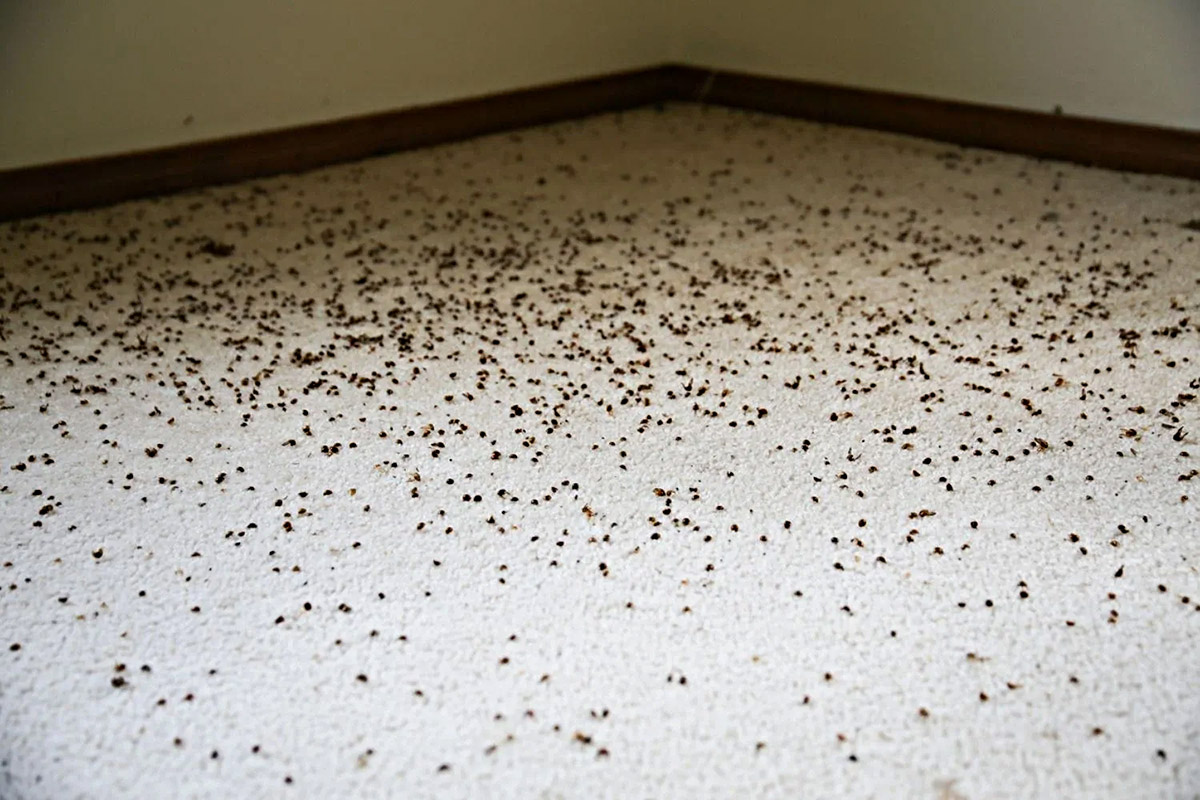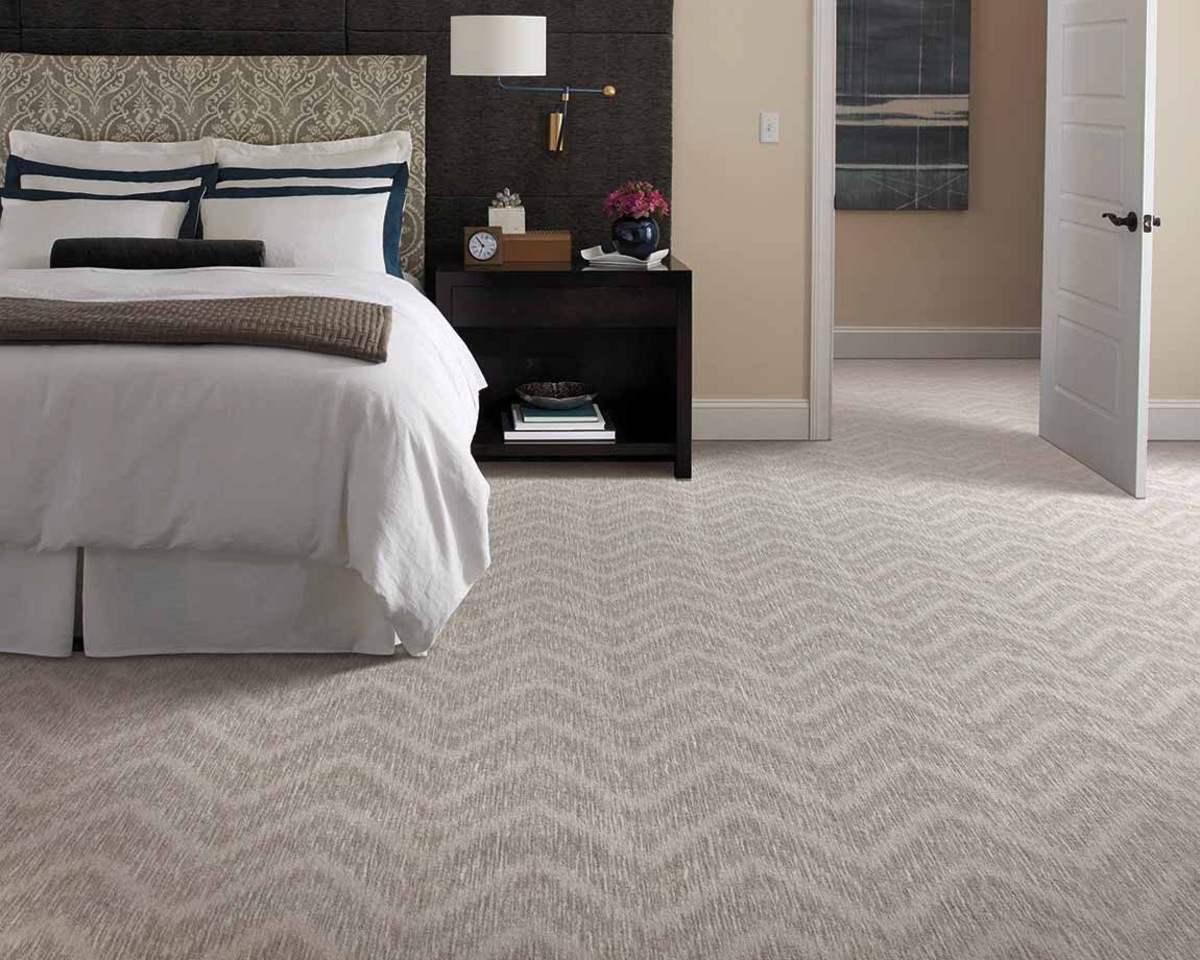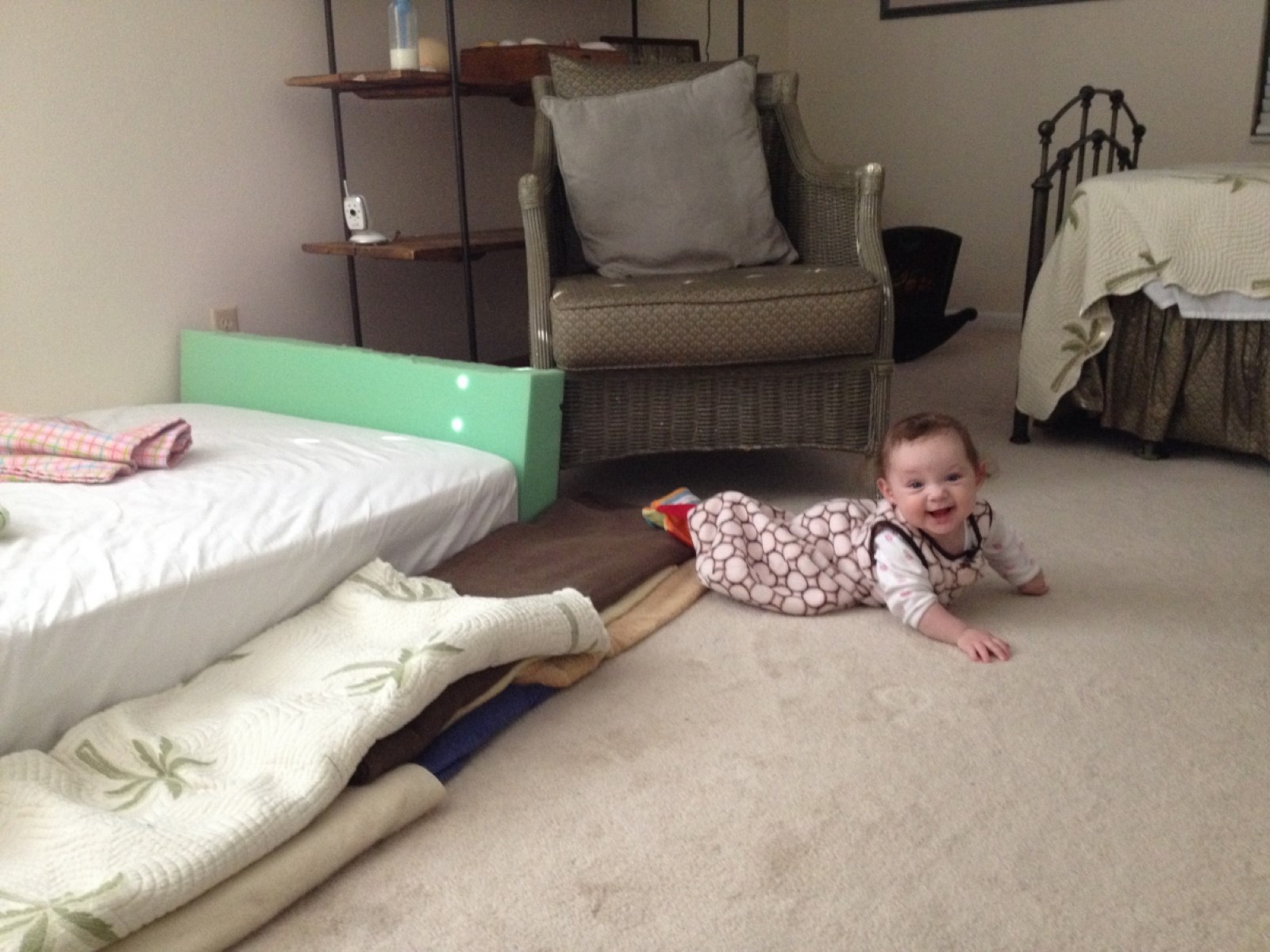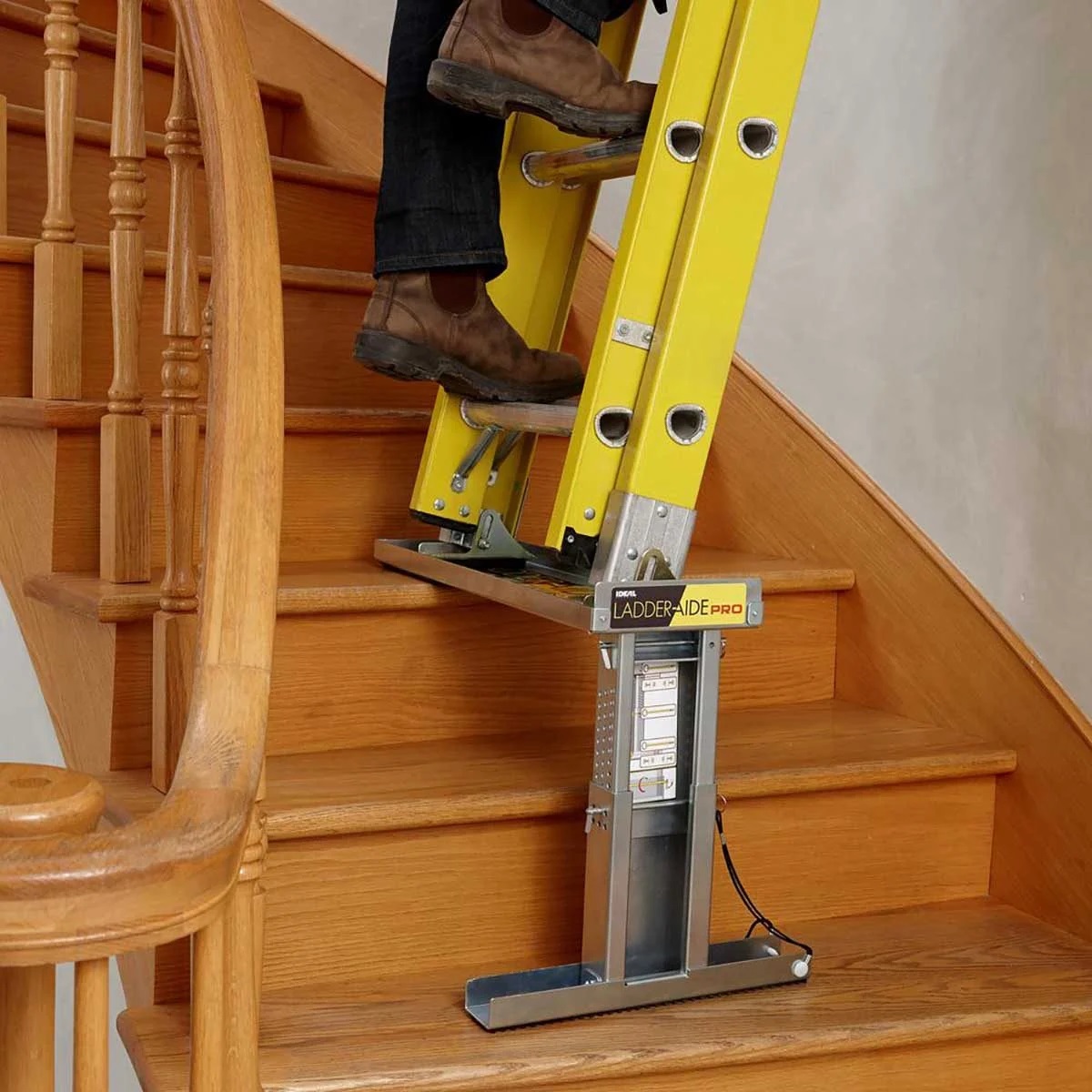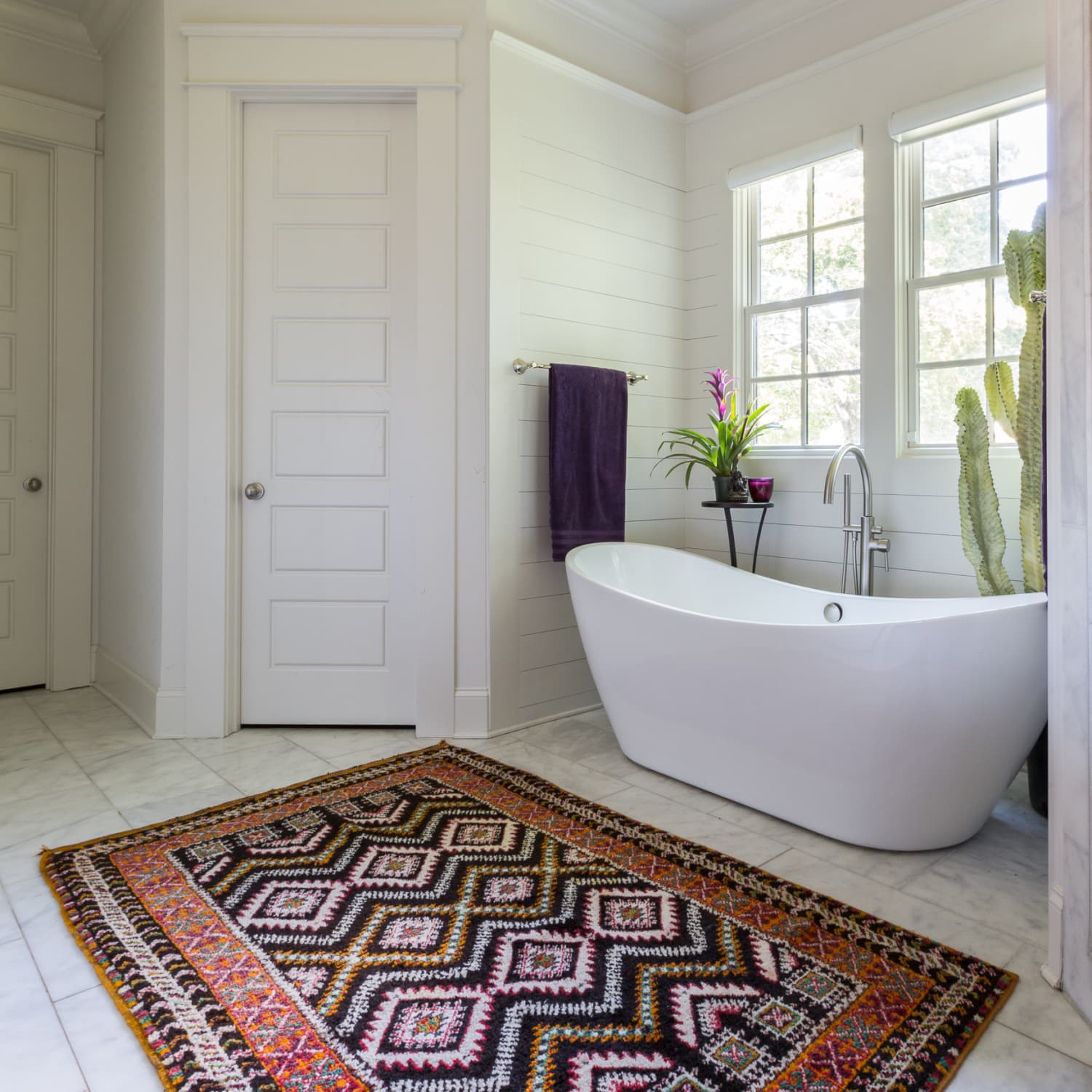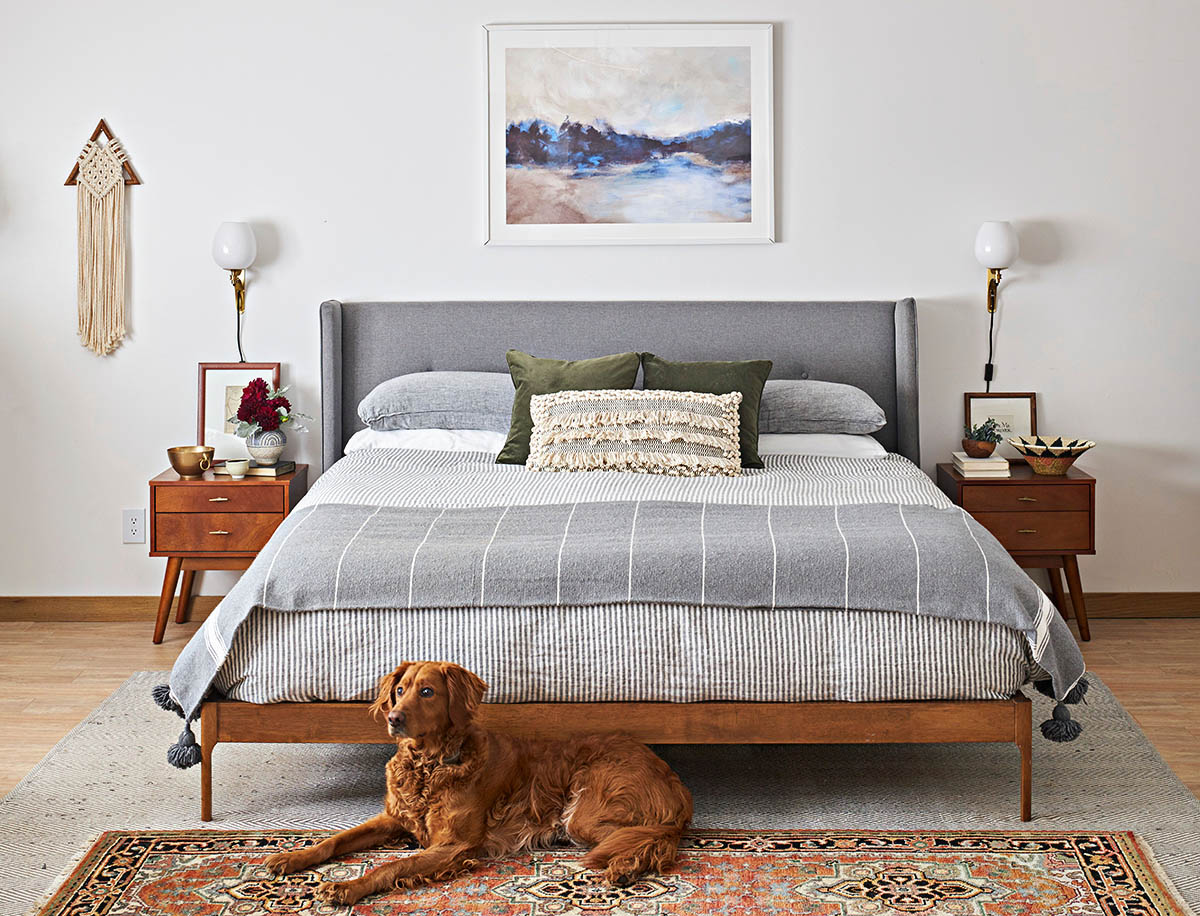

Articles
How To Place Carpet In A Bedroom
Modified: October 20, 2024
Learn the best technique for placing carpet in your bedroom with our informative articles. Create a cozy and comfortable space with expert tips and advice.
(Many of the links in this article redirect to a specific reviewed product. Your purchase of these products through affiliate links helps to generate commission for Storables.com, at no extra cost. Learn more)
Introduction
Adding carpet to your bedroom can instantly transform the space and create a cozy and inviting atmosphere. Not only does carpeting provide warmth and comfort underfoot, but it also reduces noise and adds a touch of luxury to any bedroom decor.
In this article, we will guide you through the process of placing carpet in a bedroom. Whether you are looking to replace old flooring or install new carpet, we will cover everything from measuring the room to the final finishing touches. By following these steps, you will be able to achieve professional results and enjoy a beautiful and comfortable carpeted bedroom.
Before diving into the installation process, it’s important to consider a few factors. Think about the style and color of carpet that will complement your bedroom’s design. Consider the level of foot traffic in the bedroom and choose a carpet material that will withstand wear and tear. Also, budget plays a significant role in determining the type of carpet and installation method. By keeping these considerations in mind, you can make informed decisions and ensure a successful carpet installation in your bedroom.
Now, let’s get started with the step-by-step guide to placing carpet in a bedroom!
Key Takeaways:
- Proper preparation is essential for successful carpet installation. From measuring the room to choosing the right carpet and preparing the bedroom, attention to detail ensures a professional and cozy result.
- Attention to detail is crucial in every step of the carpet installation process. From laying the carpet to trimming excess material and adding finishing touches, precision creates a polished and inviting bedroom space.
Read more: Where To Place A Lamp In The Bedroom
Step 1: Measure the Room
The first step in placing carpet in a bedroom is to accurately measure the room. This is essential for determining the amount of carpet and padding you will need, as well as ensuring a proper fit. Follow these steps to measure your bedroom:
- Clear the room: Start by removing all furniture and other items from the bedroom. This will give you a clear and unobstructed space to work with.
- Measure the length and width: Use a tape measure to measure the length and width of the room. Start at one wall and measure to the opposite wall, ensuring that you measure from the same point on each wall for accuracy.
- Account for any nooks or alcoves: If your bedroom has any nooks, alcoves, or closets, measure these separately and add the measurements to the total room dimensions.
- Consider pattern matching: If your carpet has a pattern, you may need to order additional material to ensure that the pattern matches up correctly.
- Calculate the square footage: Once you have the length and width measurements, multiply them together to calculate the total square footage of the room. This will be helpful when purchasing carpet and padding.
It’s always a good idea to measure the room multiple times to ensure accuracy. It’s better to double-check than to end up with too little or too much carpet.
Once you have the measurements, you can move on to the next step: choosing the right carpet for your bedroom.
Step 2: Choose the Right Carpet
Choosing the right carpet for your bedroom is crucial to achieving the desired look and feel. There are several factors to consider when making your carpet selection:
- Carpet Type: There are various types of carpet available, including plush, berber, frieze, and loop. Consider the texture, durability, and maintenance requirements of each type before making your decision.
- Carpet Fiber: Common carpet fibers include nylon, polyester, wool, and olefin. Each fiber has its own advantages and disadvantages in terms of durability, stain resistance, and comfort. Take these factors into account when choosing the carpet fiber that suits your needs.
- Color and Pattern: Consider the color and pattern of the carpet to ensure that it complements the overall design and style of your bedroom. Lighter colors can make the room appear more spacious, while darker colors provide a cozy and intimate atmosphere. Patterns can add visual interest and hide stains and wear.
- Pile Height: The pile height refers to the thickness and density of the carpet fibers. Choose a pile height that suits your preferences and the level of comfort you desire.
- Budget: Set a budget for your carpet purchase and stick to it. Keep in mind that high-quality carpet may come with a higher price tag, but it can also offer superior durability and longevity.
- Consider Lifestyle and Usage: Think about the level of foot traffic in your bedroom and choose a carpet that can withstand it. If you have pets or children, opt for a carpet that is stain-resistant and easy to clean.
Visit different carpet stores or browse online to explore the options available. Don’t hesitate to ask for samples to bring home and see how they look in your bedroom’s lighting. Take your time to make the right decision, as the carpet you choose will have a significant impact on the overall aesthetics and comfort of your bedroom.
Once you have selected the perfect carpet, it’s time to prepare the bedroom for the installation process.
Step 3: Prepare the Bedroom
Before installing the carpet, it’s important to properly prepare the bedroom to ensure a smooth and successful installation process. Follow these steps to prepare your bedroom:
- Remove all furniture: Clear the room of all furniture and other items. This includes beds, dressers, nightstands, and any other movable objects. Removing furniture will provide you with a clean and empty workspace.
- Inspect the subfloor: Before laying the carpet, inspect the subfloor for any damage, cracks, or uneven areas. Ensure that the subfloor is clean, dry, and free of debris. If necessary, make any repairs or adjustments to create a level and stable base for the carpet.
- Remove old flooring: If your bedroom has existing flooring such as carpet, tile, or hardwood, you may need to remove it before installing the new carpet. Carefully remove the old flooring material, taking care not to damage the subfloor in the process.
- Clean the room: Thoroughly clean the bedroom, including the walls, trim, and baseboards. Vacuum the floor to remove any dust or debris. A clean and tidy room will ensure that the carpet installation is flawless.
- Open windows for ventilation: If possible, open the windows in the bedroom to allow for proper ventilation during the installation process. This will help to dissipate any odors from adhesives or newly installed carpet.
- Move electronics and fragile items: If you have any electronics or fragile items in the bedroom, safely move them to another room to avoid any potential damage during the carpet installation.
By taking the time to adequately prepare the bedroom, you will create an ideal environment for a successful carpet installation. Once the room is ready, you can move on to the next step: removing old flooring (if necessary).
Step 4: Remove Old Flooring (if necessary)
If your bedroom has existing flooring such as carpet, tile, or hardwood that you want to replace, it is important to remove it before installing the new carpet. Follow these steps to remove old flooring:
- Start with proper safety precautions: Before you begin, it is essential to take safety precautions. Wear work gloves, safety goggles, and a dust mask to protect yourself from any potential hazards. If you are removing old carpet, be mindful of any exposed tack strips that can be sharp.
- Carpet Removal:
- Start by cutting the carpet into manageable sections. Use a utility knife to make cuts along the edges of the room, allowing you to lift and roll up the carpet easily.
- Roll up the carpet from one end to the other, taking care to avoid damaging the walls or trim. If the carpet is attached using adhesive, carefully pull it up, ensuring not to leave any residue behind.
- Dispose of the old carpet in accordance with local regulations. Check with your local waste management facility for proper disposal methods.
- Tile or Hardwood Removal:
- If you have tile or hardwood flooring, start by removing any baseboards or trim pieces along the edges of the room. Use a pry bar and a hammer to carefully remove them.
- Next, use a chisel and a hammer to loosen and remove the tiles or planks. Work slowly and methodically, being cautious not to damage the subfloor.
- Once the surface flooring is removed, inspect the subfloor for any nails, staples, or adhesive residue. Use pliers or a scraper to remove any remaining debris.
Removing the old flooring can be a labor-intensive process, so it’s important to take your time and work carefully. If you are unsure about removing certain types of flooring, it’s best to consult a professional to ensure proper removal without causing damage to the subfloor.
Once the old flooring has been removed, you can proceed to the next step: installing carpet padding.
Read more: Where To Place Wardrobe In Bedroom
Step 5: Install Carpet Padding
Installing carpet padding is essential for providing cushioning, insulation, and longevity to your carpet. Follow these steps to properly install carpet padding:
- Measure and cut the padding: Roll out the carpet padding along the length of the room. Use a utility knife to cut the padding, allowing it to extend slightly beyond the walls. Trim any excess padding using a straight edge as a guide.
- Secure the padding: If you are working with a larger room, it may be necessary to join multiple pieces of padding together. Use adhesive carpet tape or a staple gun to secure the edges of the padding together. Ensure that the seams are flat and smooth to avoid any bumps or unevenness.
- Position the padding: Once the padding is cut and secured, position it in the room. Make sure it covers the entire floor space and fits snugly against the walls. Avoid overlapping or bunching up the padding, as this can affect the carpet’s appearance and durability.
- Trim excess padding: Use a utility knife to carefully trim any excess padding along the walls. Take your time to make clean and straight cuts, ensuring that the padding is flush with the walls.
Installing carpet padding provides a comfortable and supportive base for your carpet. It helps to absorb impact, reduce noise, and enhance insulation. Ensure that the padding is smooth and even throughout the room, as any irregularities can affect the final carpet installation.
With the carpet padding properly installed, you are now ready to move on to the next step: laying the carpet in your bedroom.
When placing carpet in a bedroom, make sure to measure the room accurately to ensure you purchase the right amount of carpet. It’s also important to properly prepare the subfloor and invest in good quality padding for added comfort and durability.
Step 6: Lay the Carpet
Now that the preparation work is complete, it’s time to lay the carpet in your bedroom. Follow these steps to ensure a proper and smooth installation:
- Roll out the carpet: Starting from one corner of the room, begin unrolling the carpet across the floor. Make sure the carpet extends beyond the walls, allowing for trimming later on.
- Position the carpet: Carefully position the carpet to align it with the walls and ensure a straight and even fit. It’s important to take your time and make any necessary adjustments to achieve a professional-looking installation.
- Smooth out wrinkles and bubbles: As you unroll the carpet, use a carpet kicker or a knee kicker tool to stretch it toward the opposite wall. This will help eliminate wrinkles or bubbles in the carpet. Work your way along the length of the room, stretching and smoothing out any imperfections.
- Tuck the carpet into corners and edges: Use a carpet tucker tool or a putty knife to gently tuck the edges of the carpet into the space between the walls and baseboard trim. Ensure a snug fit, but be careful not to damage the carpet or the walls in the process.
- Continue laying the carpet: Move along the room, unrolling and positioning the carpet. Repeat the stretching and smoothing process to eliminate any wrinkles or bubbles as you go.
Take your time during this step to ensure that the carpet is straight, smooth, and properly aligned with the walls. It’s important to maintain tension as you go to prevent any sagging or loose areas.
With the carpet successfully laid, it’s time to move on to the next step: stretching and securing the carpet in place.
Step 7: Stretch and Secure the Carpet
Stretching and securing the carpet is a critical step to ensure a tight and wrinkle-free installation. Follow these steps to properly stretch and secure the carpet:
- Start from the center: Begin in the center of the room and work towards each wall. Using a power stretcher tool, stretch the carpet towards the opposite wall. Make sure to apply even tension to avoid overstretching or damaging the carpet.
- Secure one side: Once the carpet is stretched, use a knee kicker to secure one side of the carpet to the tack strip along the wall. Use the knee kicker to firmly push the carpet into the teeth of the tack strip, ensuring a secure attachment.
- Repeat on the other side: Move to the opposite side of the room and repeat the process, using the power stretcher to stretch the carpet and then securing it to the tack strip with the knee kicker.
- Work on the remaining sides: After securing the two opposite sides, continue stretching and securing the carpet along the remaining walls, working your way around the room.
- Trim excess carpet: Once the carpet is securely in place, use a carpet knife to carefully trim any excess carpet along the walls. Make sure to follow the contour of the baseboard for a clean and precise cut.
Stretching and securing the carpet is crucial for a professional-looking installation. It helps to eliminate wrinkles and loose areas, ensuring a tight and smooth surface. Take your time during this step to ensure that the carpet is properly stretched and securely attached to the tack strip.
With the carpet stretched and secured, it’s time to move on to the next step: trimming excess carpet for a clean finish.
Step 8: Trim Excess Carpet
Trimming the excess carpet is the final step in achieving a neat and clean finish. Follow these steps to properly trim the excess carpet:
- Prepare your tools: Gather a carpet knife or utility knife, a straight edge or ruler, and a piece of scrap wood or a cutting board.
- Start with the corners: Begin trimming the excess carpet at the corners of the room. Use the straight edge or ruler to guide your knife along the edge of the carpet, creating a straight cut.
- Work along the walls: Move along the walls of the room, using the same technique to cut a straight line along the excess carpet.
- Trim around obstacles: If there are any obstacles in the room, such as doorways or vents, carefully cut the carpet to fit around them. Take your time to make precise cuts to ensure a clean and professional finish.
- Check for any loose edges: After trimming, check the edges of the carpet to ensure that they are secure and firmly attached to the tack strips. If you notice any loose edges, use a carpet trimmer or a putty knife to tuck them into the space between the walls and baseboard trim.
It’s important to take your time and pay attention to detail when trimming the excess carpet. Precise cuts will result in a polished and professional appearance.
With the excess carpet trimmed and the edges secured, you’re ready for the final step: adding the finishing touches to complete the carpet installation in your bedroom.
Read more: Where To Place Rugs In Bedroom
Step 9: Finishing Touches
After successfully placing and securing the carpet in your bedroom, it’s time to add the final touches to complete the installation. Follow these steps to put the finishing touches on your new carpet:
- Vacuum the carpet: Use a vacuum cleaner with a soft brush attachment to carefully vacuum the entire surface of the carpet. This will help to remove any loose debris, fibers, or dust that may have accumulated during the installation.
- Replace furniture and accessories: Once the carpet is clean and fresh, you can start bringing back the furniture and accessories to their designated spots in the bedroom. Take care when moving heavier furniture to avoid dragging it across the carpet, as this can cause damage.
- Consider adding floor protection: For high-traffic areas or areas prone to spills or stains, you may want to consider adding floor protection, such as rugs or mats. This will help to preserve the carpet and make it easier to clean.
- Inspect the carpet for any issues: Take a walk around the room and closely inspect the carpet for any visible issues, such as loose seams or frayed edges. If you notice any problems, address them promptly to prevent further damage or deterioration.
- Clean and maintain regularly: To keep your newly installed carpet in optimal condition, it’s important to establish a regular cleaning and maintenance routine. Vacuum the carpet regularly, address any spills or stains promptly, and schedule professional deep cleaning as needed.
By attending to these finishing touches, you can ensure that your carpet installation is complete and that your bedroom is transformed into a comfortable and inviting space.
Congratulations! You have successfully learned how to place carpet in a bedroom. Enjoy the comfort and beauty of your newly carpeted space.
If you have any further questions or need assistance, don’t hesitate to reach out to a professional carpet installer for guidance.
Conclusion
Placing carpet in a bedroom is a rewarding and transformative project that can enhance the comfort and aesthetics of your space. By following the step-by-step guide outlined in this article, you can achieve a professional-looking carpet installation that will provide warmth, insulation, and durability for years to come.
From measuring the room and choosing the right carpet to preparing the bedroom and securing the carpet in place, each step plays a crucial role in the overall success of the installation. Taking the time to properly prepare the room, remove old flooring if necessary, and install carpet padding ensures a solid foundation for the carpet.
Stretching and securing the carpet and trimming the excess carpet are important steps that contribute to a smooth and wrinkle-free finish. It is in these details that the true beauty of the carpet installation is revealed.
Remember, proper maintenance and regular cleaning are essential to keep your carpet looking its best. Vacuuming regularly, promptly addressing spills or stains, and scheduling professional deep cleaning as needed will help to prolong the life and beauty of your carpet.
Now that you have learned how to place carpet in a bedroom, you can transform your space into a cozy and inviting oasis. Enjoy the softness underfoot, the warmth it provides, and the aesthetic appeal it brings to your bedroom.
If you have any further questions or need assistance throughout the carpet installation process, do not hesitate to reach out to a professional carpet installer for guidance and support. Happy carpeting!
Frequently Asked Questions about How To Place Carpet In A Bedroom
Was this page helpful?
At Storables.com, we guarantee accurate and reliable information. Our content, validated by Expert Board Contributors, is crafted following stringent Editorial Policies. We're committed to providing you with well-researched, expert-backed insights for all your informational needs.
